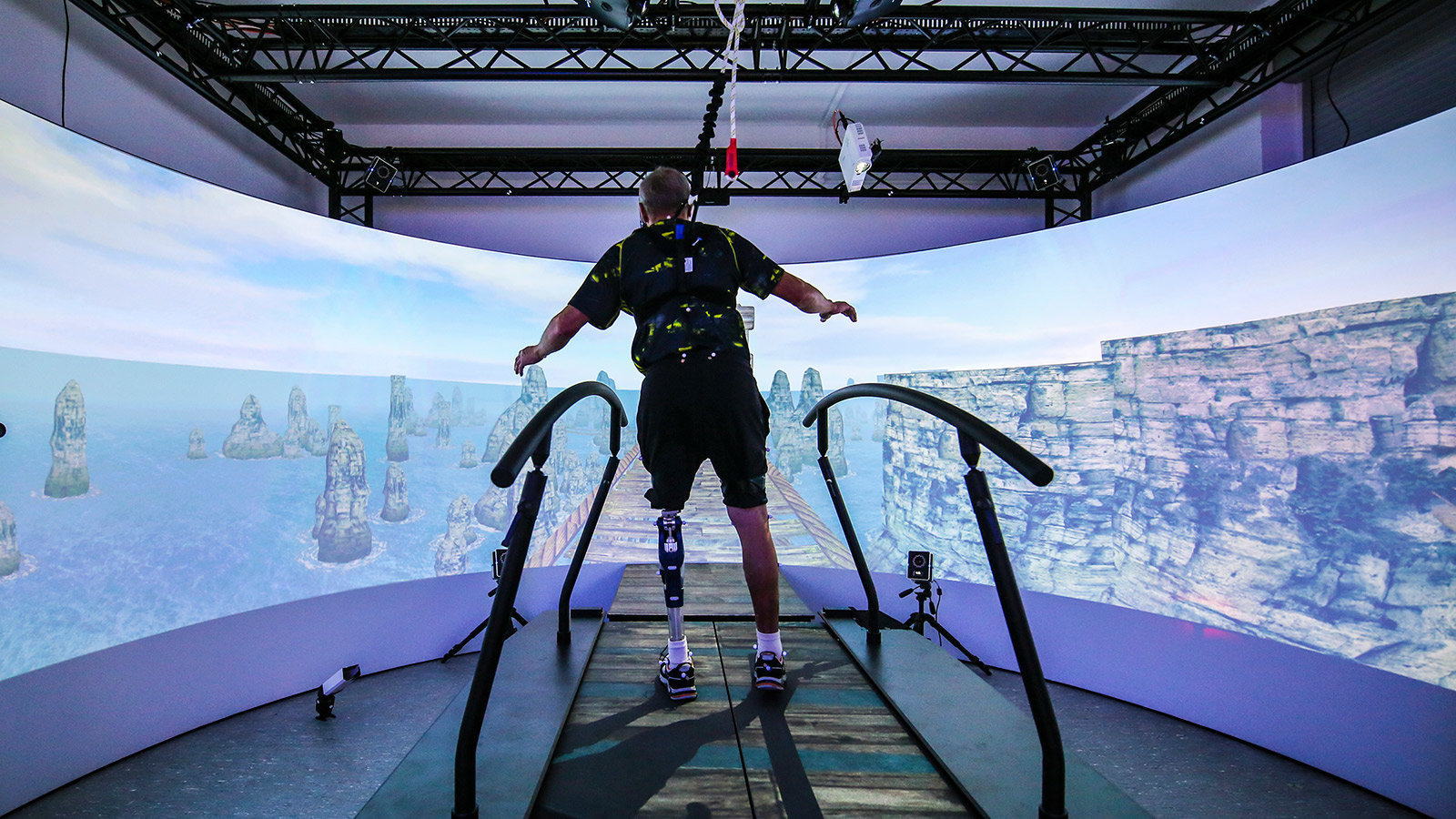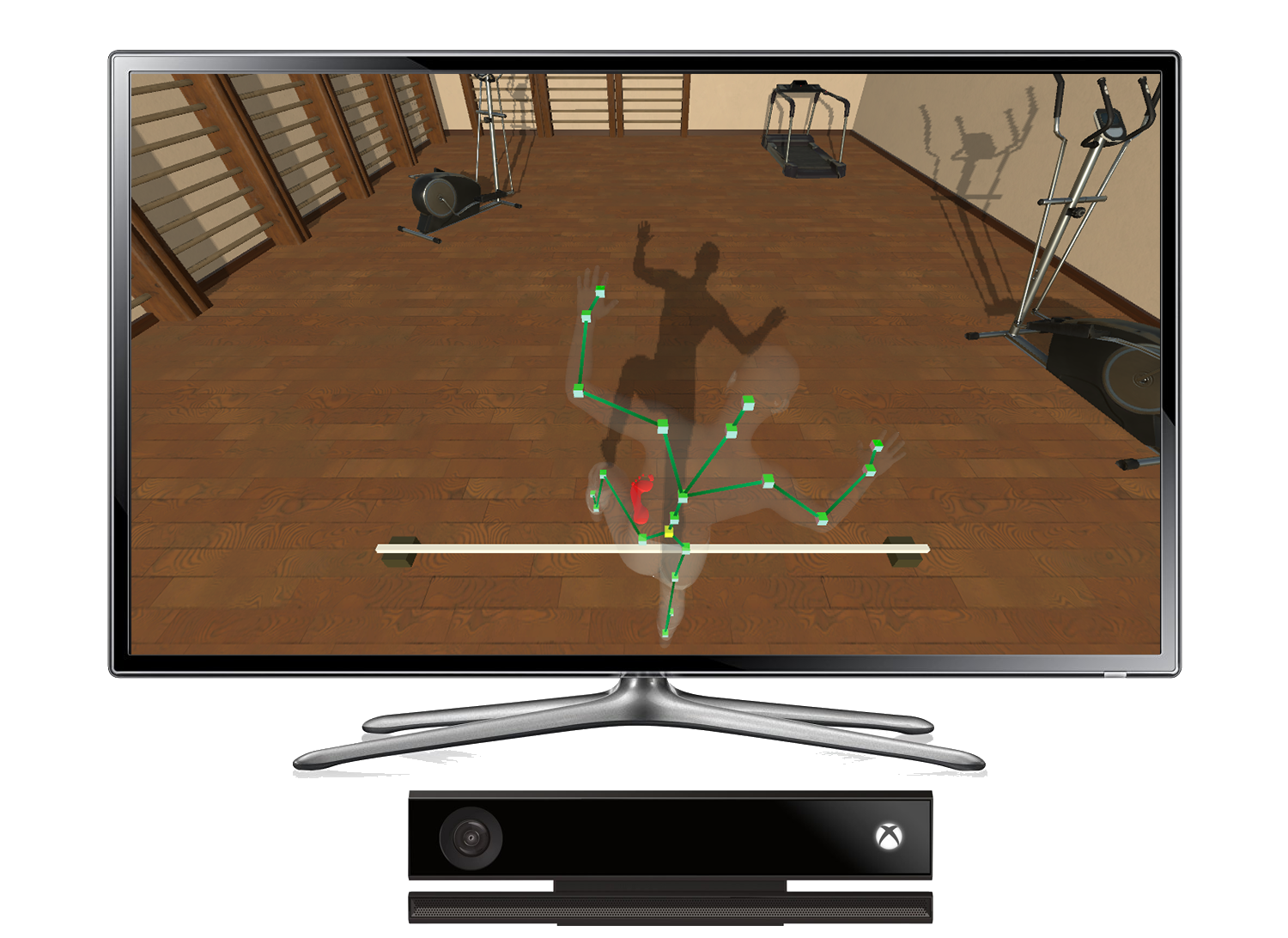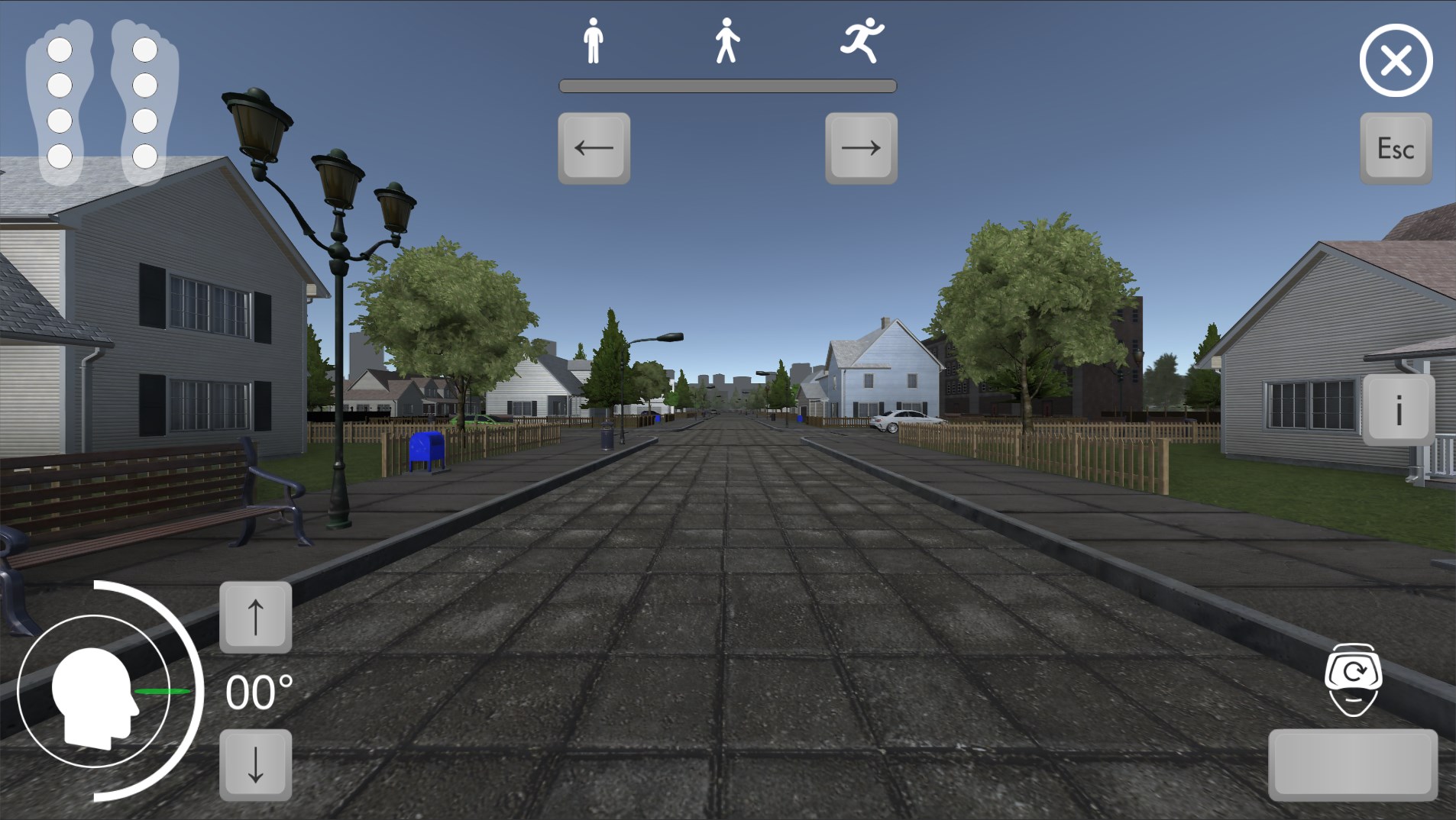Virtual reality - the game, treatment, life. VR technologies in the service of rehabilitation medicine
Spending hours at computer games is not just an activity for professional cybersportsmen or amateur gamers. There are people to whom immersion in virtual reality is prescribed by the attending physician. Much more depends on their success in the game than entering a new level or owning a painted artifact. For them, virtual reality is a simulator that provides quality of life, its comfort, and sometimes duration. Welcome to the world of VR rehabilitation.

The usual for modern computer games graphics technology has been used in medicine for a long time. This is not often written and said, because the scope of their application is not the most popular for the Russian media. But the importance of such developments from this does not become less.
')
Thousands of people in the country need rehabilitation with the use of virtual reality technology. Hundreds of them receive such assistance and by their example confirm its effectiveness. Several domestic startups and scientific medical centers are trying to satisfy the market's demand for simulators and VR rehabilitation programs. But while such companies are too few to fill a niche, which in the coming years will only grow. Although the results achieved now demonstrate market prospects and, of course, the value for those who need rehabilitation.
The company “Motorika” develops and manufactures technologies at the interface of medicine and robotics. The main product is hand prostheses for children and adults. In addition to mechanical traction prostheses, Motorika successfully produces complex and very high-tech bionic devices, the functionality of which actually turns its owner into a cyborg. A person can control such a device in much the same way as a living arm, using the same muscles and nerve endings.
But in order to fully master the bionic prosthesis and use it confidently, it takes months of training and rehabilitation. In order to facilitate and qualitatively improve this work, the programmers “Motorics” have created the ATTILAN digital rehabilitation platform. At its core, this is a VR helmet video game with a consistent storyline. Players will visit the orbit of Mars, inside the international space station ATTILAN and prepare for the coming colonization of the planet.
But the tasks and difficulties that await them near the Red Planet are designed to teach how to use bionic prostheses. The players here are walking around the station, perform small household tasks, manage the cargo and shoot. Different game characters are provided for various rehabilitation measures: engineer, scientist, pilot of a spacecraft.

Controlled by the same muscles that control bionic prostheses. Special sensors record the tension in the muscle fibers of the forearm and transmit data to the program. The player sees in front of him, for example, one “live” arm and one futuristic prosthesis, with which he moves, squeezes and unclenches his palm, takes and carries objects due to the correct work of the muscles of the remaining part of the amputated arm. That is how in the future the player will manage his bionic prosthesis in the real world.
In the game ATTILAN, Motorika implemented one of the most innovative and modern methods of preparing for prosthetics. But in medical rehabilitation, virtual reality technologies, as mentioned above, have long been used in other areas. For example, to recover patients with impaired motor functions due to brain damage. Such rehabilitation is often necessary for people who have suffered a stroke or other vascular diseases that have damaged the brain.
The Istok-Audio Group of Companies is the Russian leader in the production and distribution of rehabilitation facilities and assistive devices for the deaf. But the field of activity of the enterprise is constantly growing and today extends to people with disabilities of all nosologies. One of the new developments of “Source-Audio” is the virtual rehabilitation program “Devirta Delphi”.

“Devirta Delphi” is a virtual cyberspace with its own 3D world, for immersion in which, as well as in ATTILAN, a VR helmet and sensory sensors that provide biological feedback (BFR) are needed. Here, the technology is even more interactive - the patient's computer avatar repeats the movements of a person in the virtual world, which creates the appearance of real interaction with the surrounding space and additionally motivates.
People who have experienced brain damage are prescribed medical rehabilitation in the form of simple daily exercises. Devirta Delphi controls their process and allows the patient to see the result of their efforts, feeling that they are the main character in each activity.
The service Rehabunculus, provided today by the specialists of the Scientific Center of Neurology and Intellect and Innovations, works in a similar way. When creating this simulator, developers limited themselves to virtual space, without biofeedback. Unlike "Devirta Delphi" Rehabunculus does not require touch sensors, it is easier to use, but serves the same purpose - it provides the necessary amount of physical activity for each day.

“The possibilities offered by virtual reality make it possible to use certain features of the human body, in particular, brain neuroplasticity,” explains Yegor Tokunov, director general of Intellect and Innovations, LLC and project manager Rehabunculus. - “Specially selected technologies and algorithms enhance the recovery mechanisms and cause the patient's body to work in the right way. So, a virtual reality inspires a person with impaired motor functions that he can do more than he actually does and increases the motivation for rehabilitation activities. ”
But the doctors and developers from Samara State Medical University went much further, transferring the usual VR rehabilitation to the plane of neurorehabilitation, Their ReviVR neurotrener puts it on its feet in the literal and figurative sense. In the virtual world created by the programmers of Samara State Medical University, people with severe motor impairments walk again, see their feet, hear footsteps, and even feel each of them. In addition to the image and sound, the simulator provides tactile tracking.
During the session of the rehabilitation procedure, virtual reality glasses are put on the patient's head, and special pneumatic cards that imitate the pressure of the earth's surface on the feet when walking are put on the legs. In a VR helmet, the patient sees himself as a first-person upright and moves independently. The illusion of movement activates certain muscle groups that stimulate brain activity.

The experience of medical rehabilitation shows that neural connections are restored when gaming stimulates brain activity. Such a recovery is possible thanks to the same mechanism of neuroplasticity of the brain. ReviVR is intended to be the key to launching this mechanism.
The same team of SamSMU has developed another neurodrainer with a completely different task, but still with the same mission - to help people with disabilities. The program ReviMOTION is designed for children with cerebral palsy or other disorders of physical activity.
Rehabilitation with neurotrener ReviMOTION even more like a computer game. With its help, patients perform a course of exercise in an easy game form. Properly executed movement makes the virtual character move and pass level after level.
At the same time, the attending physician can track progress using the optical tracking and motion analytics system provided in the simulator, and the embedded information and analytical system will help him “guide” the patient from session to session throughout the rehabilitation course.

"We proved the effectiveness of the application as a result of the first clinical study on the basis of one of the centers," Alexander Zakharov, an associate professor at the Department of Neurology and Neurosurgery at SamSMU, shares. “Now we have connected dozens of such medical centers in Russia. Research on the effectiveness of the use of technology to restore the movement of the lower extremities of this scale in the world has not yet been conducted. We plan to justify the effectiveness of the use of VR-rehabilitation in other pathologies. ”
The experience of domestic and foreign rehabilitation practice demonstrates that solutions based on virtual reality technology can help people with disabilities recover and adapt, improve their coordination, balance and body management skills. It is reliably known that the characteristics of motion performed in real space do not have a significant difference from motion in a virtual environment. Thanks to this, even in the early rehabilitation course, a person regains confidence in his actions and strengths, and skills acquired in the VR world will be much easier to develop in the real world.

The usual for modern computer games graphics technology has been used in medicine for a long time. This is not often written and said, because the scope of their application is not the most popular for the Russian media. But the importance of such developments from this does not become less.
')
Thousands of people in the country need rehabilitation with the use of virtual reality technology. Hundreds of them receive such assistance and by their example confirm its effectiveness. Several domestic startups and scientific medical centers are trying to satisfy the market's demand for simulators and VR rehabilitation programs. But while such companies are too few to fill a niche, which in the coming years will only grow. Although the results achieved now demonstrate market prospects and, of course, the value for those who need rehabilitation.
The company “Motorika” develops and manufactures technologies at the interface of medicine and robotics. The main product is hand prostheses for children and adults. In addition to mechanical traction prostheses, Motorika successfully produces complex and very high-tech bionic devices, the functionality of which actually turns its owner into a cyborg. A person can control such a device in much the same way as a living arm, using the same muscles and nerve endings.
But in order to fully master the bionic prosthesis and use it confidently, it takes months of training and rehabilitation. In order to facilitate and qualitatively improve this work, the programmers “Motorics” have created the ATTILAN digital rehabilitation platform. At its core, this is a VR helmet video game with a consistent storyline. Players will visit the orbit of Mars, inside the international space station ATTILAN and prepare for the coming colonization of the planet.
But the tasks and difficulties that await them near the Red Planet are designed to teach how to use bionic prostheses. The players here are walking around the station, perform small household tasks, manage the cargo and shoot. Different game characters are provided for various rehabilitation measures: engineer, scientist, pilot of a spacecraft.

Controlled by the same muscles that control bionic prostheses. Special sensors record the tension in the muscle fibers of the forearm and transmit data to the program. The player sees in front of him, for example, one “live” arm and one futuristic prosthesis, with which he moves, squeezes and unclenches his palm, takes and carries objects due to the correct work of the muscles of the remaining part of the amputated arm. That is how in the future the player will manage his bionic prosthesis in the real world.
In the game ATTILAN, Motorika implemented one of the most innovative and modern methods of preparing for prosthetics. But in medical rehabilitation, virtual reality technologies, as mentioned above, have long been used in other areas. For example, to recover patients with impaired motor functions due to brain damage. Such rehabilitation is often necessary for people who have suffered a stroke or other vascular diseases that have damaged the brain.
The Istok-Audio Group of Companies is the Russian leader in the production and distribution of rehabilitation facilities and assistive devices for the deaf. But the field of activity of the enterprise is constantly growing and today extends to people with disabilities of all nosologies. One of the new developments of “Source-Audio” is the virtual rehabilitation program “Devirta Delphi”.

“Devirta Delphi” is a virtual cyberspace with its own 3D world, for immersion in which, as well as in ATTILAN, a VR helmet and sensory sensors that provide biological feedback (BFR) are needed. Here, the technology is even more interactive - the patient's computer avatar repeats the movements of a person in the virtual world, which creates the appearance of real interaction with the surrounding space and additionally motivates.
People who have experienced brain damage are prescribed medical rehabilitation in the form of simple daily exercises. Devirta Delphi controls their process and allows the patient to see the result of their efforts, feeling that they are the main character in each activity.
The service Rehabunculus, provided today by the specialists of the Scientific Center of Neurology and Intellect and Innovations, works in a similar way. When creating this simulator, developers limited themselves to virtual space, without biofeedback. Unlike "Devirta Delphi" Rehabunculus does not require touch sensors, it is easier to use, but serves the same purpose - it provides the necessary amount of physical activity for each day.

“The possibilities offered by virtual reality make it possible to use certain features of the human body, in particular, brain neuroplasticity,” explains Yegor Tokunov, director general of Intellect and Innovations, LLC and project manager Rehabunculus. - “Specially selected technologies and algorithms enhance the recovery mechanisms and cause the patient's body to work in the right way. So, a virtual reality inspires a person with impaired motor functions that he can do more than he actually does and increases the motivation for rehabilitation activities. ”
But the doctors and developers from Samara State Medical University went much further, transferring the usual VR rehabilitation to the plane of neurorehabilitation, Their ReviVR neurotrener puts it on its feet in the literal and figurative sense. In the virtual world created by the programmers of Samara State Medical University, people with severe motor impairments walk again, see their feet, hear footsteps, and even feel each of them. In addition to the image and sound, the simulator provides tactile tracking.
During the session of the rehabilitation procedure, virtual reality glasses are put on the patient's head, and special pneumatic cards that imitate the pressure of the earth's surface on the feet when walking are put on the legs. In a VR helmet, the patient sees himself as a first-person upright and moves independently. The illusion of movement activates certain muscle groups that stimulate brain activity.

The experience of medical rehabilitation shows that neural connections are restored when gaming stimulates brain activity. Such a recovery is possible thanks to the same mechanism of neuroplasticity of the brain. ReviVR is intended to be the key to launching this mechanism.
The same team of SamSMU has developed another neurodrainer with a completely different task, but still with the same mission - to help people with disabilities. The program ReviMOTION is designed for children with cerebral palsy or other disorders of physical activity.
Rehabilitation with neurotrener ReviMOTION even more like a computer game. With its help, patients perform a course of exercise in an easy game form. Properly executed movement makes the virtual character move and pass level after level.
At the same time, the attending physician can track progress using the optical tracking and motion analytics system provided in the simulator, and the embedded information and analytical system will help him “guide” the patient from session to session throughout the rehabilitation course.

"We proved the effectiveness of the application as a result of the first clinical study on the basis of one of the centers," Alexander Zakharov, an associate professor at the Department of Neurology and Neurosurgery at SamSMU, shares. “Now we have connected dozens of such medical centers in Russia. Research on the effectiveness of the use of technology to restore the movement of the lower extremities of this scale in the world has not yet been conducted. We plan to justify the effectiveness of the use of VR-rehabilitation in other pathologies. ”
The experience of domestic and foreign rehabilitation practice demonstrates that solutions based on virtual reality technology can help people with disabilities recover and adapt, improve their coordination, balance and body management skills. It is reliably known that the characteristics of motion performed in real space do not have a significant difference from motion in a virtual environment. Thanks to this, even in the early rehabilitation course, a person regains confidence in his actions and strengths, and skills acquired in the VR world will be much easier to develop in the real world.
Source: https://habr.com/ru/post/447558/
All Articles